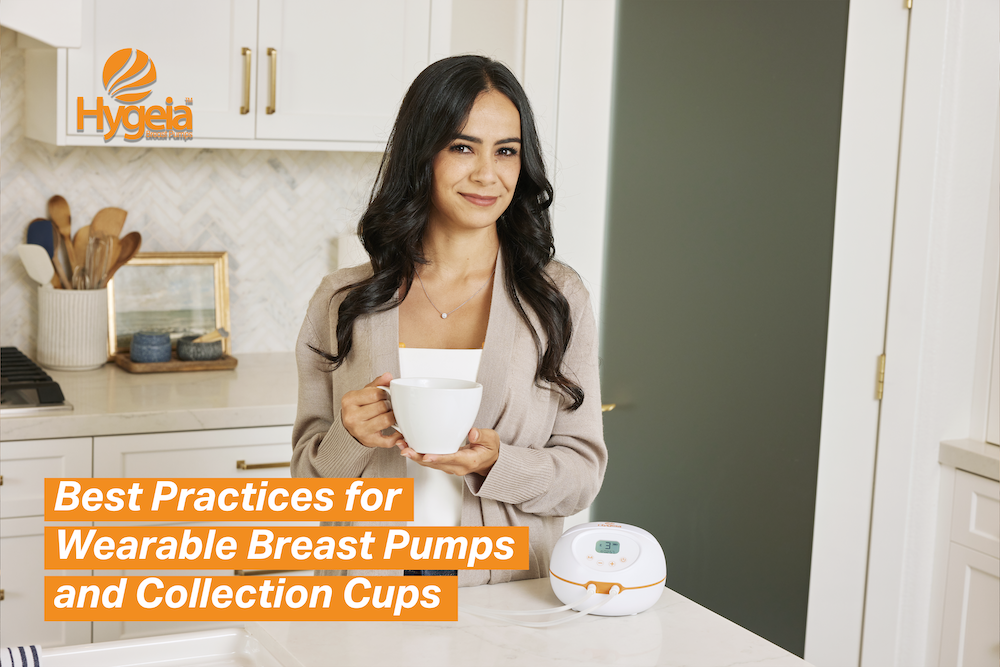Life with a newborn moves fast and before you know it, a work schedule beckons. Many moms want to continue providing breast milk for their babies past those first weeks of infancy, but traditional pumping can tie them down or be too all-consuming to fit into the schedule. This is where wearable breast pumps and collection cups come in. These innovative tools offer incredible freedom, letting you pump discreetly while you tackle chores, work, or simply enjoy hands-free moments. But to get the most out of them, knowing a few best practices for wearable breast pumps helps.
Understanding Wearable Technology
Wearable breast pumps are small, motor-driven pumps that fit inside your bra. They collect milk directly into a cup, freeing you from bottles and tubes hanging from your chest.
Collection cups, on the other hand, are designed to fit with a traditional pump’s motor, replacing the standard bottles to offer a more discreet, in-bra pumping experience.
Both aim to make pumping on the go easier and more integrated into your daily life.
Choosing the Right Fit: Flange Sizing Matters
Just like with any breast pump, flange size is critical for comfort and efficient milk expression with wearable pumps and collection cups. A flange that’s too small or too large can lead to discomfort, pain, and reduced milk output.
How to Check: After a few minutes of pumping, look at your nipple. It should move freely in the tunnel without too much of the areola being pulled in.
Signs of Poor Fit: Pain, redness, nipple blanching (turning white), or feeling like you’re not fully emptying your breast
Solution: Many brands offer various flange sizes. If you’re unsure, consult a lactation consultant for a proper fitting. Getting this right prevents pain and maximizes your milk production. In some cases moms can do best without inserts in their wearables.
Maximizing Your Wearable Pumping Sessions
Even with the convenience of wearable pumps, technique still matters for a good milk yield. Additionally, using only this hands-free technology for pumping isn’t recommended by many experts.
Reserve Wearable Pumping Time: Use your wearable pump and collection cups only a few times a day if you are exclusively pumping or semi-exclusively pumping. Choose the circumstances or times when it is most helpful, like car rides or when juggling kid demands.
Plan for Longer Pump Sessions: Pump until your breasts feel empty or milk flow significantly slows. This might vary from session to session, but many moms need to pump longer (often 10+ minutes more than usual) to get the same level of stimulation and milk.
Standard Prep and Set Up Matters: Keep to your regular best practices for pumping. A gentle breast massage or warm compress before you start can help with milk let-down. Be sure to have water close at hand and stay hydrated.
Proper Placement: Ensure the collection cup or wearable pump is positioned correctly against your breast, forming a good seal. This prevents leaks and ensures efficient suction.
Cycle and Suction Settings: Experiment with the settings. Start with a faster, lighter suction to encourage let-down, then switch to a slower, deeper suction cycle for milk expression. Adjust suction to a comfortable level. You should never feel pain.
Cleaning and Maintenance for Longevity
Maintaining hygiene is crucial for any breast pump, especially wearable pumps and collection cups that touch your skin and milk directly.
Wash After Each Use: Disassemble all parts that come into contact with milk. Wash them immediately with warm, soapy water and rinse thoroughly.
Sterilize Regularly: Sterilize parts according to manufacturer instructions, usually daily or every few days, especially for newborns.
Air Dry Completely: Allow all parts to air dry completely on a clean paper towel or drying rack to prevent bacterial growth.
Check for Wear and Tear: Regularly inspect silicone parts for rips or cracks, as these can affect suction and hygiene. Replace them as needed.

